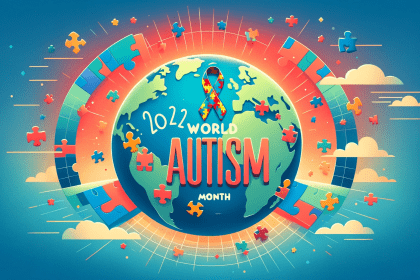Fire safety is a critical life skill that every child should learn from a young age. As parents, the responsibility of teaching your kids about fire safety primarily falls on you.
According to the American Red Cross, teaching your kids about fire safety helps protect them from potential hazards. It also empowers them with the knowledge to respond appropriately in case of a fire emergency.
How to Effectively Teach Your Kids About Fire Safety
Here are a few effective ways to educate your children about fire safety, ensuring their safety and well-being:
Open Communication
The foundation of any successful fire safety education is open and honest communication with your children. Begin by talking to them about fire in a calm and age-appropriate manner. Explain that fire can be both beneficial and dangerous, and they should respect its power. Encourage questions and answer them honestly. Ensure they understand fire is not a toy and can cause harm when mishandled.
Discuss fire hazards around the house, such as the stove, electrical outlets, candles, and matches. They should never play with fire or attempt to light anything alone. Establishing a trusting and understanding relationship is essential so your children feel comfortable approaching you with their concerns or questions about fire safety.
Develop an Escape Plan
According to the US Fire Administration, it’s vital to create a fire escape plan together as a family. Involve your kids in the planning phase as well, so that they know what’s happening and what’s expected from them in fire emergencies. This plan should include identifying multiple exits from your home, designating a safe meeting place outside, and practicing the escape route.
Explain the importance of staying low to the ground if there’s smoke, as smoke rises and can be toxic. Teach them how to check doors for heat before opening them and feel for heat with their hands, not their palms. Share the “stop, drop, and roll” technique for putting clothes on fire, which is easy to remember and crucial in an actual fire situation.
Remember to practice your escape plan regularly. Conduct fire drills with your children so they become comfortable with the procedures. Ensure they understand that leaving the house safely is the priority in a fire and that belongings can be replaced.

Fire-Safe Behaviors
Teach your children about fire-safe behaviors both indoors and outdoors. In the house, educate them about properly using kitchen appliances, especially the stove. Stress the importance of not leaving the kitchen unattended while cooking. Discuss the dangers of overloaded electrical outlets and the safe use of cords and plugs.
When it comes to outdoor fire safety, educate your children about the responsible use of matches and lighters. The East Sussex Fire & Rescue Service recommends that you never play with matches or lighters in front of them. After all, your kids might learn to do the same from you. Ensure the children understand the consequences of playing with fire and the importance of keeping such items out of reach.
Smoke Detectors and Fire Extinguishers
Familiarize your children with the importance of smoke detectors in the home. Explain that smoke detectors are crucial for early fire detection and how they work.
Also, introduce your children to fire extinguishers. Demonstrate how to use a fire extinguisher safely and encourage them to use it only under the supervision of an adult.
When showing them how to extinguish a fire, ensure the extinguisher doesn’t contain toxic chemicals. According to TorHoerman Law, exposure to firefighting foam or extinguishers with such chemicals can lead to cancer. This was something brought to public knowledge in the AFFF firefighting foam incident.
The AFFF firefighting foam cancer lawsuits were filed because the product’s usage led to the development of various types of cancer in the users. This led to the firefighter foam cash settlements worth between $40,000 and $300,000. Such high settlement amounts go to show just how grave the situation with the AFFF foam was.
Hence, to make sure your kids aren’t exposed to such dangerous extinguishers, always do your research. Ensure that the extinguishers you use for the demos don’t contain any toxic chemicals and are safe to use in all aspects.
Role-Playing Scenarios
Role-playing scenarios are a practical way to prepare your children for potential fire emergencies. Use scenarios to teach them how to react in different situations and make safe choices.
Role-play how to use a fire extinguisher to put out a small fire or how to assist a family member to evacuate the house. Teach them how to call 911 in case of an emergency and the information they should provide to the operator.
Encourage your children to ask questions and express their concerns during these role-playing exercises. This hands-on approach helps them understand the importance of staying calm and making smart decisions in stressful situations.
Conclusion
Knowing about fire safety is an absolute must for kids of all ages. To ensure this as their parents, the discussed points can help you out. By implementing all these strategies, you can rest assured that your kids will be fully equipped with the knowledge they need surrounding fire safety.



